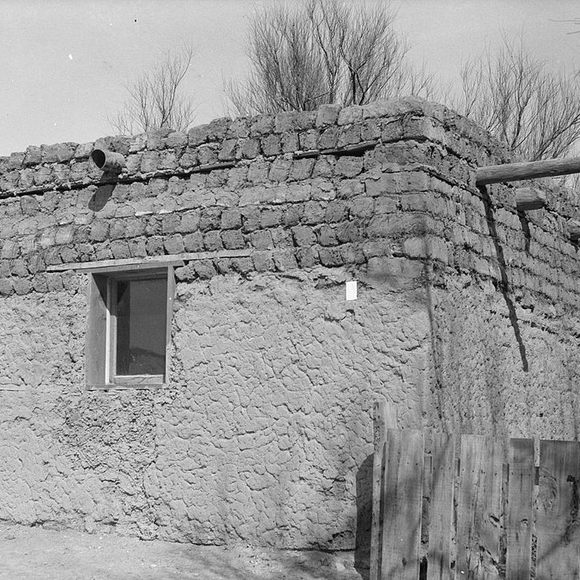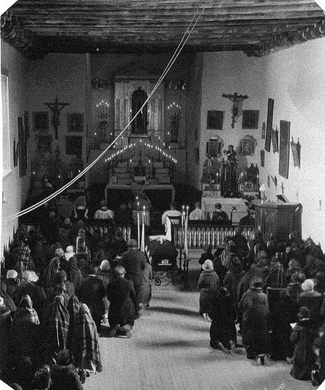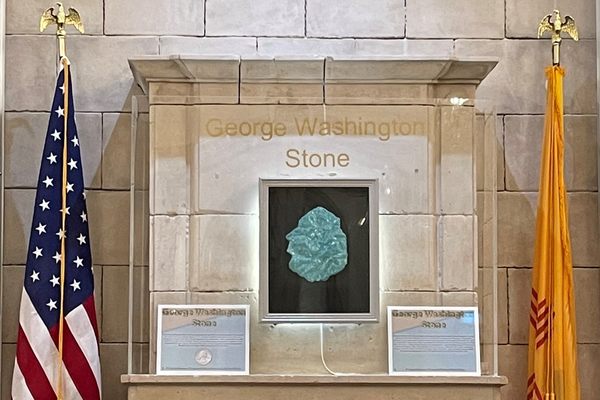Pueblo of Isleta
This centuries-old pueblo church houses the body of a Franciscan friar who is said to be a rare "incorruptible" corpse.
The ancient mission church at Isleta Pueblo houses the remains of Fray Juan Jose de Padilla, a Laguna Pueblo missionary who was stabbed to death by unknown assailants in the mid-1700s, and who is also believed to have burst from his burial grave as fresh as the day he died.
Padre Padilla was first buried in 1756 in the church floor at Isleta, near the high altar by the presbytery. 19 years later, during Mass, the altar started to shake, strange noises emanated from the ground, and the corpse of Padre Padilla rose to the surface of the earthen floor. Even more surprisingly, his body was intact and supple.
An official investigation immediately commenced. His remains were studied for about two weeks by various experts and church authorities in hopes of finding an explanation. The investigation was inconclusive, but witnessed and well documented. It is likely that his body was put on public display during this time. Padre Padilla was re-buried, this time in a hollowed out cottonwood tree, and respectfully dressed in the blue habit worn by the Franciscan Order. It was hoped that by thus honoring his remains, they would finally rest in peace.
However, in 1819, 44 years later, the cottonwood coffin containing the remains of Padre Padilla mysteriously rose from the church floor. Again, his body was intact and flexible, and even his clothing was perfectly preserved. Again, it was subjected to official examination and public viewing. This time around, the story had gained credibility, the corpse was significantly older, and Padre Padilla was considered to be an “incorruptible,” or sacred corpse. The church at Isleta became the site of a Holy Pilgrimage and the rising of the Padre’s 63-year-old intact corpse, a miracle.
It was, and is still rumored that these remains are the remains of the first Christian martyr of the Southwest, the Fray Padilla who traveled to New Mexico with Coronado in the 1540s. This is not even a remote possibility. The church is one of the oldest surviving mission churches in the United States. It was built in 1613, nearly destroyed by the Pueblo Revolt in the 1690s, and rebuilt by DeVargas decades before Padre Padilla was ever buried there.
The New Mexican climate was certainly conducive to an accidental mummification, but to be classified as an incorruptible, the Padre would have to be flexible, supple, moist, and emit a mysterious but pleasant odor known as the “odor of sanctity.” Some saints emit the smell of roses, or jasmine, others emit the smell of a fresh water spring. Padre Padilla had a pleasant odor about him, described as smelling “as the earth freshly watered.” Padre Padilla seemed to fit the requirements of a sacred corpse, people took bits of his habit and these pieces of his clothing were said to perform miraculous healing cures.
By the time the Padre resurfaced again, 76 years later, the story had grown to mythic proportions and the Padre was missing a foot. By now there were no living witnesses to the Padre’s previous risings, and the story had become a deeply entrenched part of the local folk history. This time, instead of making a grand entrance, Padre Padilla’s now 134-year-old corpse was dug up on purpose. The famous French Franciscan priest at Isleta at the time, Anton Docher, exhumated the Padre’s remains after many years of strange knocking sounds (“golpes” in Spanish) emanated from the grave site, which was now covered with a wooden floor. Several witnesses had also reported simultaneously seeing an apparition of a 18th century Franciscan friar. Docher decided to investigate, and opened the grave of Padre Padilla. As he was doing so, he injured his arm and contracted gangrene so severe that doctors recommended amputation. The Natives believed it was the curse of Padre Padilla, inflicted on Docher for disturbing his grave. Docher said a prayer asking Padre Padilla for intercession and the wound was healed.
Padre Padilla’s remains were immediately reburied following Docher’s investigation, but he rose several more times before the church decided to install a cement floor in the 1960s. The strange noises, the altar shaking, apparitions, miracle cures and the incorruptibility of the body have never been satisfactorily explained, or officially pronounced a miracle, but there is little doubt in the hearts of New Mexicans. When Docher, known as “The Padre of Isleta,” died in 1928, he was buried next to Padre Padilla near the high altar, at the Pueblo of Isleta, 172 years after Padre Padilla was buried for the first time.
Know Before You Go
Isleta Pueblo is located 14 miles south of Albuquerque off I-25 on Hwy 47.
Community Contributors
Added by
The Atlas Obscura Podcast is Back!





















Follow us on Twitter to get the latest on the world's hidden wonders.
Like us on Facebook to get the latest on the world's hidden wonders.
Follow us on Twitter Like us on Facebook